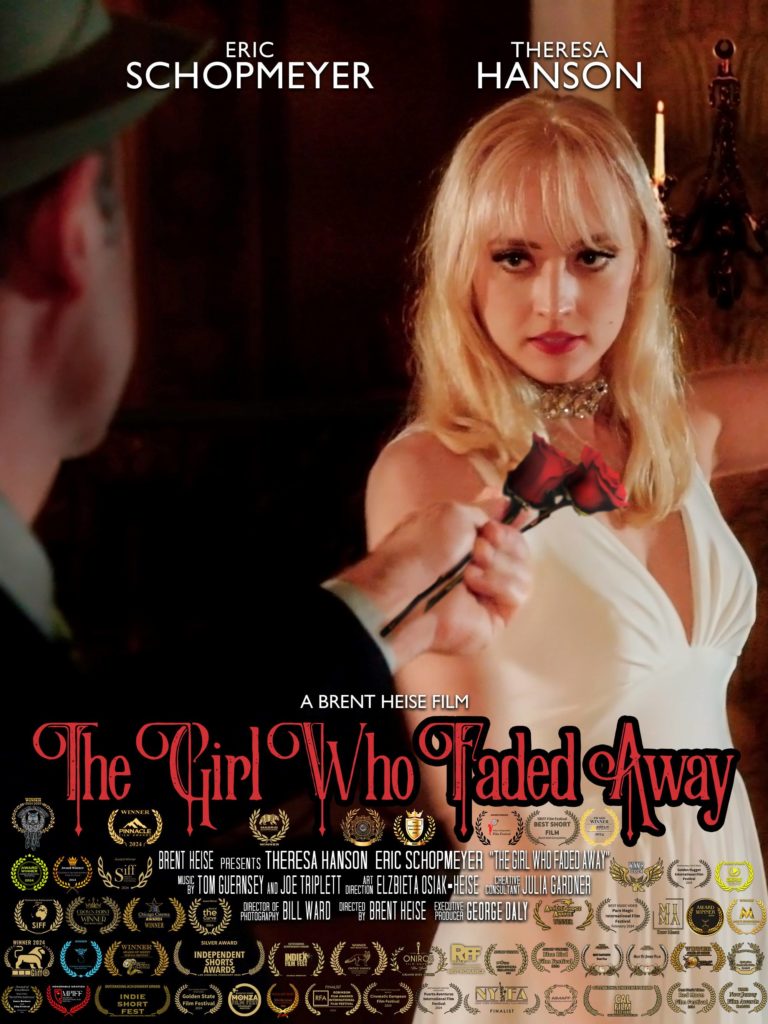
In 2013, I wrote about attending a celebration of life service for Tom Guernsey, whom I described as “guitarist/songwriter/producer/entrepreneur…one of the icons of the Washington, D.C. rock scene for the past 50 years.” Tom had ALS/Amyotrophic lateral sclerosis (AKA “Lou Gehrig’s Disease”), and passed away in October 2012. His story was told at the time by Terence McArdle in The Washington Post, “A Local Life: Tom Guernsey, Md. musician who penned regional hit in the 1960s, dies at 68.”
Tom had been living in Portland, Oregon in the last years of his life, and was working on projects with Portland filmmaker Brent Heise, who has now directed a short, award-winning music film inspired by Tom’s life and music, “The Girl Who Faded Away.” There was a screening in Las Vegas on April 25 at the Indie Vegas Film Festival, and upcoming screenings include May 4th at the Hillsboro Film Festival, in Hillsboro, Oregon; and May 23rd at the Louisville Film Society Short Film Slam at Speed Art Museum, in Louisville, Kentucky.
I’m grateful to Brent for answering my questions about his work with Tom, the music itself, and the backstory of the film.
Tom Guernsey passed away almost 12 years ago. Can you discuss why there is a tribute now in the form of the music video “The Girl Who Faded Away,” which you directed, as opposed to, for instance a documentary, or a tribute album devoted to his music?
I decided to share Tom Guernsey’s genius in the form of a music film because that was his favorite way to work with me. This project is a continuation of our collaboration that was truncated by his declining health. The opening has a different music track to establish the mood and sets the stage for Tom’s song. Once his song begins, there is some context for the scratchy quality of the recording by way of a wind-up phonograph played by the protagonist. Tom and I collaborated on several movies, but my work for his “On the Road (At 17)” song was what stood out the most. Tom told me that he would give me “carte blanche” on the next one, and it took more than a decade to have the means to do it. Adrienne, Tom’s widow, has been very supportive as well as introducing me to former bandmate George Daly, an iconic music executive/artist who joined me as Executive Producer and Co-Writer.
“The Girl Who Faded Away” has won various music video awards and continues to be screened at various theaters/festivals. Given that Tom co-wrote the song when he was in The Hangmen in the 1960s, and that vocalist Joe Triplett is listed as the co-writer, is this a new version of the song?
This version was performed by Tom and Joe in the 1960s. The old recording has a warmth stemming from its well-played acetate source. Their charming performances correlate to the 1960’s British invasion and would be unattainable by anyone else today. They were apparently inspired specifically by The Zombies for this song. The acetate recording’s low fidelity has a vintage aesthetic, augmenting the sentimental plot that unfolds. Tom was highly nostalgic about his music career, especially the early days, and I sometimes accompanied him when he distributed CDs of his music from a duffle bag as he made connections in Portland.
Given that the video is presumably not supporting a new, commercially-released record, how does it differ creatively/conceptually/commercially from videos that might be, for instance, part of the MTV Video Awards? Related to that, will there eventually be access to this video online, and is there a possibility that the song itself will ultimately be commercially released?
Provided that it is a passion project, the video is suited for film festivals focused on underrepresented artists with a creative edge. Co-writer George Daly and I added mythological components to the storytelling, such as the protagonist encountering an owl that shape shifts into the “Girl.” It is a deviation from the standardized lip sync performances seen in many music videos. Tom was particularly displeased with the idea of lip syncing under any circumstance. He favored storytelling over artifice, and I believe that he would be pleased with the artistic license that George and I took. Upon reflection, the last words that I spoke to Tom were that I would continue to share his music. Tom could not respond to me verbally and so he made a giant thumbs up gesture. I have made good on that promise and I have Adrienne and George to thank, among countless others. In addition George, an experienced music publisher, was motivated to get Tom’s songs into today’s media for today’s audiences. Specifically that means to him Netflix, film, TV and online. This was for Tom’s recognition, as well as to provide his widow Adrienne with possible revenues that were, unfortunately, absent during the time he was alive.
